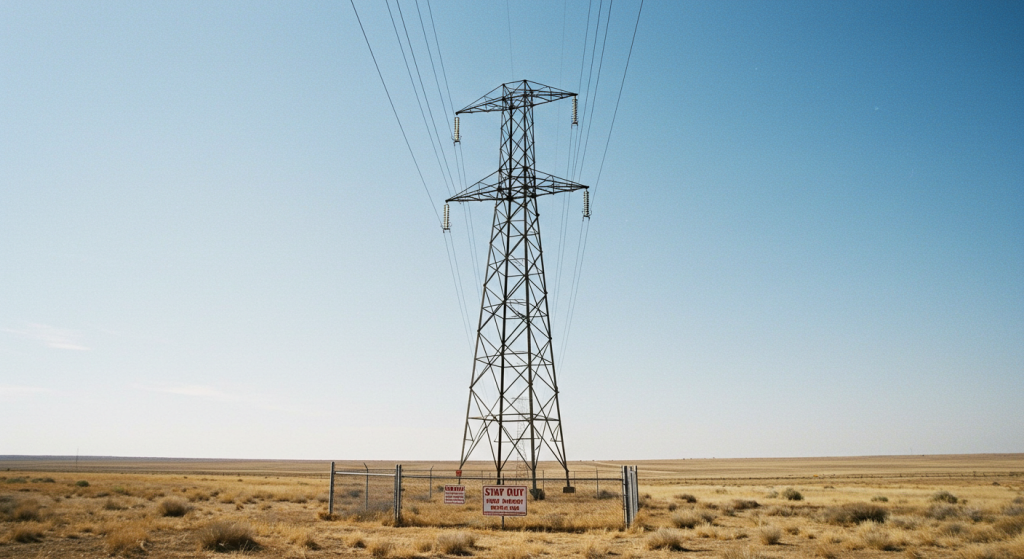Utility Towers: Powering Our World, One Structure at a Time
2025-04-18
What is a Utility Pole?
As defined in “Pole”, a pole is a type of structure deemed fit for bearing a disparate set of other units specially designed as vertical extensions.
Utility Poles: Their Importance
- Construction and telecommunications have been made easier with the integration of utility poles into the electricity distribution network. Furthermore, they are critical to maintaining gas distribution systems and allow for accurate electricity metering.
- In addition to their constructional purpose, their design allows them to withstand climatic conditions like strong winds, rainfall, and temperature changes.
Utility Towers: Essential Infrastructure for Power Transmission
Electricity transmission towers, otherwise known as grade control towers, are the most essential equipment needed in today’s society. They assist in distributing the electrical energy received from different power plants. This energy is sent through high-voltage power lines connected to utility towers, which are later fed into substations and finally distributed to homes and commercial centers.
Leading Innovation in Utility Towers: Tower Design Services
- Our company has almost two decades of experience specializing in the design, production, and marketing of energy and electric utility accessories such as transmission and communication towers, substation structures, and other steel elements.
- We guarantee quality because with the materials we obtain from known manufacturers and additional control at every stage of production, we only use quality materials guarantees them.
- All issued warranty products for prolonged reliability and endurance enjoy the trust of national bureau standards and thorough inspection report certification.
Features and Design Parameters of Utility Poles
- Material and Strength
The utility poles are also made out of Q255B, Q355B, and Q420B steel grades. Such materials make the poles strong and durable. The quality of these materials greatly improves their resistance towards bearing loads, extending the steel's life.
- Wind Resistance
While mounted, these poles are capable of bearing high wind speeds and turbulent weather conditions, enduring negative wind pressure up to 30M/S. This allows them to cater to different regions and be adaptable to different environments.
- Surface Treatment
Apart from rust, galvanizing these poles will be beneficial in protecting them from corrosion, which will greatly extend their life by increasing their durability.
- Voltage Grade
The poles can be used for different power transmission requirements since they have a range threshold of 10kV to 220kV.
- Height and Customization
Customized options and features of the poles are offered, ranging from 5 meters to up to 200 meters, supporting the requirements of power change transmission networks, both urban and rural.

Dimensional Tolerance
The distribution poles' standards for flexible dimensions streamline the processes of installation and operation.
- Types and Components
Utility poles may be subdivided into three categories according to their shape: flange, plug-in, and reducing. The components that make use of poles, such as the electric pole, pole body, cross arm, climbing nail, and fall protective device, serve not only functional purposes but also provide safety and structural support for the utility pole.
- Versatility and Customization
Utility poles have a wide variability in diameter and shape depending on the required function. Their versatility makes them applicable in rural and urban regions, which enables centralized electric and telephone services in even the most remote locations.
Key Components of Utility Towers
- Tower Body
The primary tower element serves as the bearing for other parts, which is usually made of galvanized steel to avoid corrosion.
- Cross Arms
Elongated components positioned horizontally to the sides of the tower body that extend backward from the face of the tower. They are used to support power conductors with a strap space sufficient for positioning.
- Insulators
Components that are used to render inoperable the conduction of electricity in given parts of high voltage. Insulators are made of porcelain or polymer, which can withstand massive voltage and not explode due to internal pressure.
- Conductors
Electric current is transmitted through conductors. Both aluminum and aluminum-reinforced steel are used because they are light and strong.
- Ground Wires
These wires help prevent the structure from being damaged by lightning. They guide dangerous electrical energies safely into the ground.
Utility Towers for Power Transmission
An important factor in the allocation of power is the utility towers, since they provide support for the high-voltage transmission lines that traverse different regions.
- Overhead Electric Power Lines
Electricity is predominantly transmitted using utility towers that hold Overhead Power Lines. This method is efficient and safer, which explains the popularity of its popularity.
- Electric Grid Interconnection
These towers provide a balanced electric supply to power plants and substations, as well as to the consumers. They are one of the most fundamental electric structures in the grid.
- Renewable Source Electric Power Transmission
Some plants, like wind and solar farms, are included as crops that are interconnected with renewable power sources through these towers.
Creating and Preserving the Safety of Utility Towers
- Continuous Check-Ups
During every inspection, the wear of the conductors, corrosion, or any broken structure is checked and assessed, along with ensuring dependability.
- Power Line Maintenance
During planned periodic work for the structure, all damaged conductors should be repaired, insulators put in, and parts of the tower strengthened.
- Provisions Personally Related to Safety
While constructing or when doing maintenance on the tower, worker care for OSHA and IEEE standards is required and must be followed rigidly.
Construction Steps
1. Acquiring the necessary permits from the appropriate authorities and surveying the area for possible access routes to the ideal location.
2. Ensure the base on which the tower will be placed is reliable and strong enough to support the weight during the construction of the foundation.
3. The tower will be constructed around the base and will be positioned using cranes and other necessary tools at the foundation.
4. Conductor Installation – Aligning all power lines while observing all clearance requirements.
5. Final Inspection and Testing – Assessment of structural integrity and checks of the electrical system.
Conclusion
Utility towers are significant components in modern electricity architecture systems since they aid in the effective and efficient transmission of electrical power. They will be enhanced with smart integration, advanced materials, and eco-friendly designs that foster resilience in future sustainable power grids due to advancements in technology in the coming decades. For more information about these towers, visit XY Tower.

Hey, I’m Chunjian Shu
"X.Y. Tower: Reliable, innovative solutions for high-quality towers and electrical equipment with professional service.
